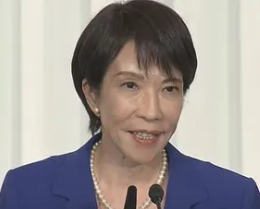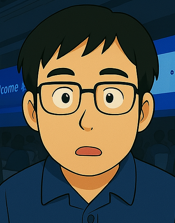Sanae Takaichi: Japan’s New Female Prime Minister — Family, Love, and the Courage to Rebuild

When Sanae Takaichi became Japan’s first-ever female Prime Minister on October 4, 2025, it wasn’t just another change in leadership — it was a historic reset.
For the first time in Japan’s postwar era, the top seat of government was occupied by a woman who had clawed her way up not through dynasty or privilege, but through sheer willpower.
While analysts debate her policies, the public has become equally fascinated by something else — her life off the political stage.
Who is Sanae Takaichi when she’s not giving fiery speeches or crafting national policy?
What kind of family does she have?
And what does her remarriage say about modern Japan’s shifting values?
As a 40-something systems engineer who’s spent decades analyzing patterns — both in code and in people — I couldn’t help but see her story as a masterclass in resilience and reinvention.
So let’s unpack the woman behind the title.
Sanae Takaichi’s Roots: From Nara to Nagatacho
Born in Nara Prefecture in 1961, Takaichi didn’t grow up surrounded by power or politics.
Her father was a pharmaceutical company employee, and her mother managed the household — a classic example of postwar middle-class Japan.
She wasn’t the daughter of a former prime minister, nor the niece of a corporate tycoon.
Instead, she built her own ladder.
In college at Kobe University, she studied business administration, showing early signs of the analytical mind that would define her later career.
Friends recall her as sharp, confident, and quietly ambitious — someone who didn’t talk much but always seemed to be two steps ahead.
From her youth, Takaichi was drawn to news and debate. She once mentioned that watching television discussions during her teenage years sparked her fascination with government and public policy.
That curiosity — and a stubborn refusal to give up — carried her from the quiet streets of Nara to the very center of Japan’s political power.
Whether she had siblings remains unclear, but many biographers describe her as an only child — independent, focused, and self-directed.
In my experience, single children often grow into leaders. When you grow up without older brothers or sisters to rely on, you learn early to decide for yourself.
Marriage, Divorce, and Re-Marriage: The Political Power Couple
Takaichi’s personal life reads like something out of a Japanese political drama — measured, restrained, but full of emotion between the lines.
In 2004, she married Taku Yamamoto, a fellow politician and fellow conservative.
Together, they became a kind of power couple — respected, intelligent, and unafraid to challenge male-dominated norms.
But politics, as always, is demanding.
After more than a decade together, they divorced in 2017, citing the pressures of their careers.
At the time, many assumed that was the end of their story.
Then, quietly and unexpectedly, they reunited.
Not long after, the two remarried — an event that surprised both colleagues and the public.
In a society that often avoids “redoing” relationships, their remarriage sent a subtle but powerful message:
that understanding and forgiveness are not weaknesses, but strengths.
I remember a coworker telling me once, “My wife and I divorced, but we got along better after that — like rebooting an operating system that finally loads faster.”
Maybe that’s what happened with Takaichi and Yamamoto: two people who learned each other’s “code,” and decided to debug, not delete.
Stepchildren, Adoption, and an Expanded Family
One of the lesser-known facts about Takaichi’s life is that she has no biological children — but she is, in every sense, a mother.
Through her marriage with Yamamoto, she became stepmother to three children from his previous marriage, and she formally adopted them.
Yes — Japan’s new Prime Minister is also an adoptive parent.
It’s a detail that adds both warmth and complexity to her public image.
In Japan, adoption — especially among political or high-profile families — is still somewhat unusual.
But Takaichi’s decision reflects a broader, quieter form of leadership: embracing family in all its modern forms.
As someone who’s worked with many blended families in tech circles (yes, we engineers talk about family more than people think), I’ve learned that real leadership often starts at home.
Patience, empathy, and structure — the same skills that make a good manager — also make a good parent.
Yes, She’s a Grandmother Too
And here’s the part that really surprises people — Sanae Takaichi is already a grandmother.
Through her adopted stepchildren, she has grandchildren who adore her.
It’s a striking image: Japan’s top leader, a woman running Cabinet meetings by day and chatting with her grandkids by night.
She doesn’t fit the traditional mold of a “grandmother,” nor does she try to.
In an interview years ago, she said, “We can be many things at once — that’s what makes us human.”
That line feels like her entire philosophy condensed into a single sentence.
Rebuilding Life and Love: What Her Marriage Reveals
After reconciling with Yamamoto, Takaichi described her perspective on life as “more patient, more grounded.”
Their remarriage, she implied, wasn’t about going back — it was about starting over.
It’s a lesson many of us could use.
In engineering, when a system crashes, we don’t throw it away — we fix what failed, and build something more stable.
Takaichi did the same with her marriage.
To the public, she represents discipline and strength; to those who know her privately, she’s known for her humor and her habit of humming old pop songs while working late.
Those little human details matter — they remind us that power doesn’t erase personality.
The Significance of a Female Prime Minister with a Family
For decades, Japan’s political system has been dominated by older men in dark suits.
The idea of a woman leading — let alone a remarried one with stepchildren and grandchildren — was nearly unthinkable a generation ago.
Takaichi shattered that ceiling and then swept up the glass.
Her leadership isn’t just a victory for women; it’s a reminder that family and power aren’t opposites.
A mother, a grandmother, a political veteran — she stands as proof that leadership is not about fitting an image but rewriting it.
Many young Japanese women see her as living evidence that they can build both a family and a career — even in a culture that still subtly discourages it.
In her victory speech, she said, “I stand here not as a symbol, but as someone who worked for it.”
That humility — paired with quiet fire — might be the secret to her success.
Public Reaction: Hope, Curiosity, and New Expectations
The reaction to Takaichi’s rise has been overwhelmingly positive, though not without debate.
Supporters celebrate her directness and clarity — “Finally, someone who says what she means,” wrote one commentator.
Critics, meanwhile, question whether her conservative stances will evolve now that she represents a broader demographic.
Yet what’s undeniable is that people — especially young women — are paying attention.
On social media, one mother wrote:
“I showed my daughter the news and said, ‘Look — Japan’s Prime Minister is a woman.’ She smiled and said, ‘Then maybe I can be one too.’”
As an engineer, that moment reminded me of something we say in design thinking:
If you can see it, you can build it.
Now, Japan can finally see a woman at the top.
And maybe that means the country can start building systems that include everyone — not just the usual suspects.
Summary
- Born in Nara, raised in a modest household.
- Married, divorced, and remarried politician Taku Yamamoto.
- Adopted his three children and now has grandchildren.
- Became Japan’s first female Prime Minister in 2025.
- Balances strength, warmth, and humanity in leadership.
Sanae Takaichi’s story isn’t just political — it’s personal.
It’s about resilience, reconciliation, and redefining what leadership looks like in the 21st century.
She may have broken barriers, but she didn’t do it alone — she built bridges along the way.
